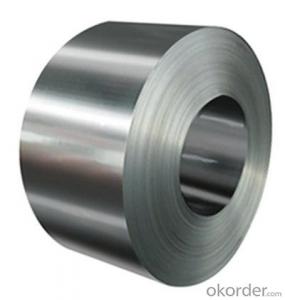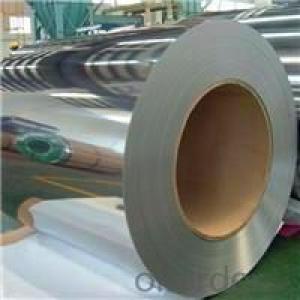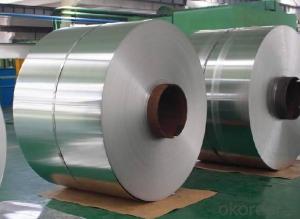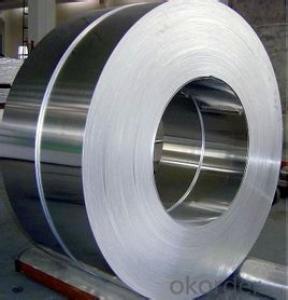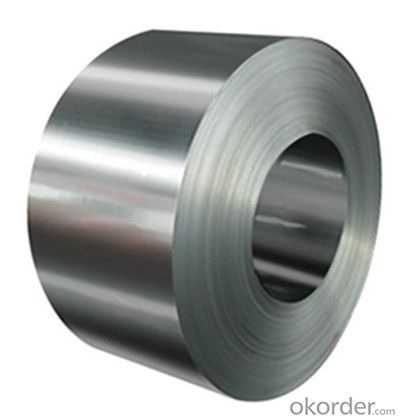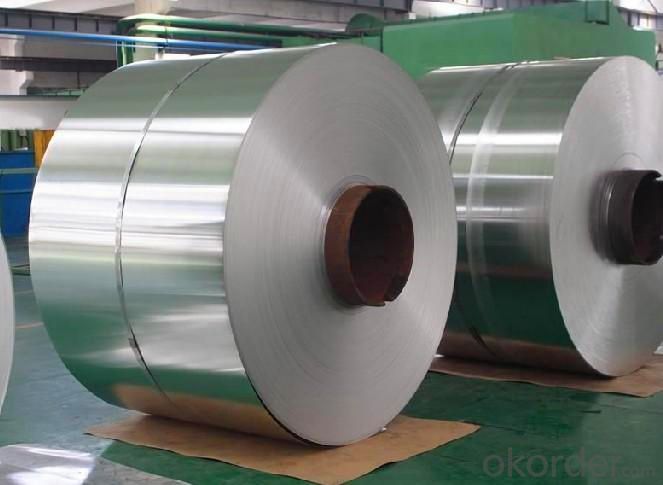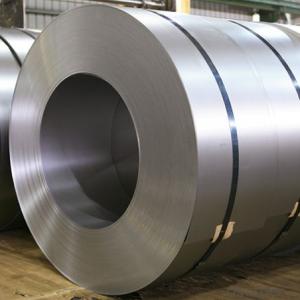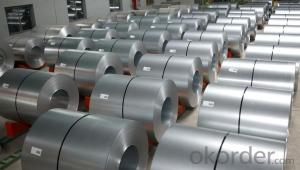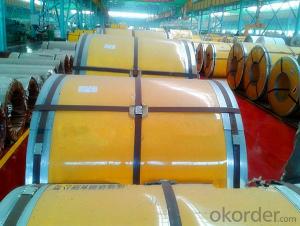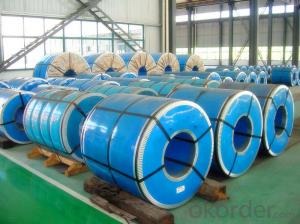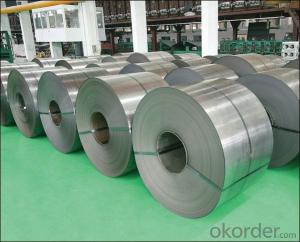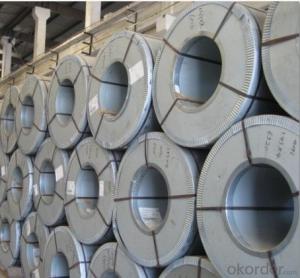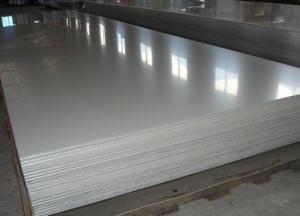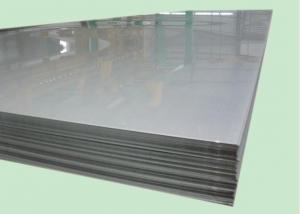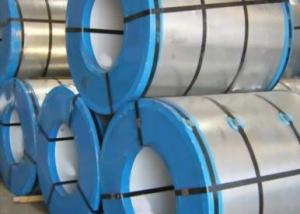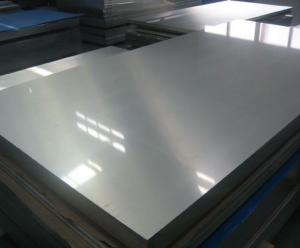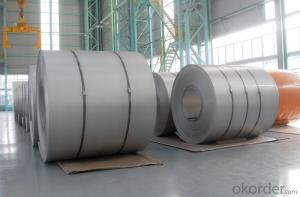Stainless Steel Coil Cold Rolled 201 J4 Surface 2B with High Quality
- Loading Port:
- China main port
- Payment Terms:
- TT or LC
- Min Order Qty:
- 100 m.t.
- Supply Capability:
- 10000 m.t./month
OKorder Service Pledge
OKorder Financial Service
You Might Also Like
1. Structure of Stainless Steel Coil Cold Rolled 201 Descriptions
Stainless Steel 201 is a new kind of Austenite stainless steel by used Mn, N replace Ni. The steel has good corrosion resistance and hot / cold processing performance, instead of 304 stainless steel products for used in the not high of corrosive environment, such as indoor, inland city outdoor etc.
2. Main Features of the Stainless Steel Coil Cold Rolled 201
Product name: Stainless Steel Coil Cold Rolled 201
Thickness: 0.2mm to 1.5mm
Technical: Cold Rolled
Width: 10mm to 1240mm
Type: 200 Series
Length: As customer's requested
Standard: JIS, SUS, AISI, ASTM
Grade: 201-J1, 201-J4, AISI201, AISI202…
Finish: BA, 2B, 8K, NO.3, NO.4, HL…
MOQ: 25 Metric Tons
Hardness: Low Hard(190 HV Max); Half Hard(240-280HV); Full Hard(42-60 HRC)
Ship Term: FOB any port, China or CFR Destination port
Delivery Time: 15 to 20 day after the receive the deposit or 100%LC
Payment Terms: TT 30% for deposit, Balance against the copy of B/L, or 100%LC
Packaging: By wooden pallet, wooden case or according to customer's request
3. Stainless Steel Coil Cold Rolled 201 Images
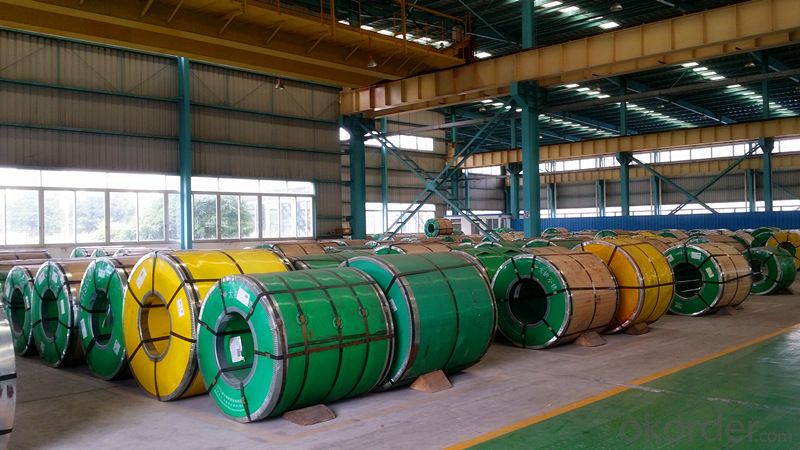
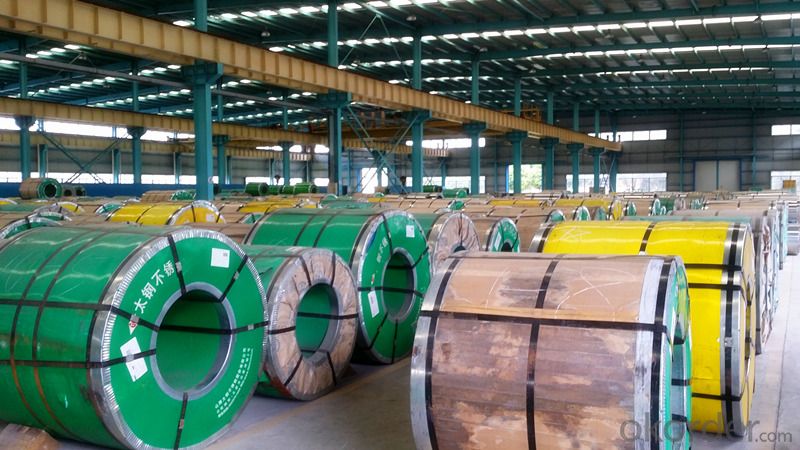
4. Stainless Steel Coil Cold Rolled 201 Specifications
Mechanical Property Contrast | YS (Mpa) | TS (Mpa) | EL(%) | HV | REMARK |
Stainless Steel 201 | 426 | 880 | 52 | 224 | 1.0t |
Stainless Steel 304 | 285 | 710 | 58 | 165 | 1.0t |
Stainless Steel 200 Series Chemicals Contrast (wt. %) | ||||||||
Chemicals | C | Si | Mn | Cr | Ni | N | Other | |
205 | 0.12-0.25 | ≤0.75 | 14.0-15.0 | 16.5-18.0 | 1.0-1.75 | 0.32-0.4 | ||
JIS, | 201 | ≤0.15 | ≤1.0 | 5.5-7.5 | 16.0-18.0 | 3.5-5.5 | ≤0.25 | - |
201L | ≤0.03 | ≤0.75 | 5.5-7.5 | 16.0-18.0 | 3.5-5.5 | ≤0.25 | - | |
202 | ≤0.15 | ≤1.0 | 7.5-10.0 | 17.0-19.0 | 4.0-6.0 | ≤0.25 | - | |
201LN | ≤0.03 | ≤0.75 | 6.4-7.5 | 16.0-17.5 | 4.0-5.5 | 0.1-0.25 | Cu≤1.0 | |
India | 201-J1 | ≤0.08 | ≤0.75 | 7.0-8.0 | 15.0-17.0 | 4.0-5.0 | ≤0.1 | Cu≤1.5 |
201-J3 | ≤0.08 | ≤0.75 | 9.0-10.5 | 14.0-16.0 | 2.0-3.0 | ≤0.15 | Cu≤2.0 | |
201-J4 | ≤0.10 | ≤0.75 | 8.5-10.0 | 15.0-16.0 | ≤1.2 | ≤0.2 | Cu≤2.0 | |
America | 204 | ≤0.03 | ≤1.0 | 7.0-9.0 | 15.0-17.0 | 1.5-3.0 | 0.15-0.3 | (Cu) |
H400 | ≤0.10 | ≤1.0 | 6.0-9.0 | 17.0-19.5 | ≤3.5 | ≤0.3 | - | |
Japan | YUS130S | 0.09 | 0.5 | 11.0 | 18.0 | 6.5 | 0.35 | - |
NTK S-4 | 0.17 | 0.43 | 14.7 | 17.7 | 1.3 | 0.35 | - | |
NM15M | 0.08 | 0.8 | 14.5 | 17.0 | 4.3 | 0.33 | - | |
Europe America | 219 | ≤0.04 | ≤0.75 | 8.0-10.0 | 19.0-21.5 | 5.5-7.5 | 0.15-0.4 | - |
Cromanite | ≤0.08 | ≤1.0 | 9.5-11.0 | 18.0-20.0 | ≤1.0 | 0.4-0.6 | - | |
201 Surface | Characteristic and Application of Stainless Steel Coil Cold Rolled 201 |
2B | The surface brightness and flatness of 2B is better than 2D then through a special surface treatment to improve its mechanical properties,2B could nearly Satisfy comprehensive uses |
No.4 | Polished with abrasive belt of grit#150#180, have better brightness with discontinuous coarse stria, but thinner than NO.3, are used as bathtub buildings inner and electrical appliances kitchen utensils and food processing. |
BA | Cold rolled, bright annealed and skin-passed, the product have excellent brightness like mirror kitchen apparatus, etc. |
8K | The product have excellent brightness and prefer bright can be the mirror. |
5. FAQ of Stainless Steel Coil Cold Rolled 201
Q: Are you factory or trader?
A: We certainly are stainless steel manufacturer and have processing plant.
Q: Can you provide mill test certificate?
A: Yes! Mill test certificate for both hot rolled raw material coils and cold rolled coils are available.
Q: Can you make DDQ (Deep drawing quality)?
A: Yes. Our material has been widely used for producing stainless steel pots and stainless steel sinks, which have strict request for good deep drawing quality.
Q: How to get a sample?
A: Free samples are available for your checking and testing. And to get free samples, please send us your detailed receiving address (including post code) and your DHL/FEDEX/UPS account for collecting samples, courier cost will be paid in your side.
Q: How about your company?
A world class manufacturer & supplier of castings forging in stainless steel, is one of the large-scale professional investment casting production bases in China, consisting of both casting foundry forging and machining factory. Annually more than 90000 tons Precision casting and forging parts are exported to markets in Europe, America and Japan. OEM casting and forging service are available, all according to customer’s requirements.
Q: How to guarantee the quality of the products?
A: We have established the international advanced quality management system,every link from raw material to final product we have strict quality test; We resolutely put an end to unqualified products flowing into the market. At the same time, we will provide necessary follow-up service assurance.
Q: How long can we receive the product after purchase?
A: In the purchase of product within 20 working days, we will arrange the factory delivery as soon as possible. The specific time of receiving is related to the state and position of customers. Commonly 20 to 40 working days can be served.
- Q: What is the thickness range for stainless steel strips?
- Depending on the specific grade and application, the thickness of stainless steel strips may vary. In general, these strips can be obtained in thicknesses ranging from 0.0015 inches (0.0381 mm) to 0.125 inches (3.175 mm). This extensive range provides versatility for their widespread utilization in industries like automotive, aerospace, construction, and manufacturing.
- Q: What is the average lifespan of stainless steel strips?
- The lifespan of stainless steel strips can differ based on a variety of factors, including the grade and quality of the steel, the environment in which they are used, and the level of maintenance and care they receive. Generally, stainless steel is recognized for its durability and resistance to corrosion, which can contribute to a longer lifespan compared to other materials. In well-maintained and non-corrosive environments, stainless steel strips can endure for several decades. However, if the strips come into contact with harsh chemicals, high temperatures, or abrasive conditions, their lifespan may be reduced. Regular cleaning and maintenance, such as removing accumulated dirt or debris, can also aid in extending the lifespan of stainless steel strips. It is important to understand that the average lifespan is merely an estimation and can fluctuate depending on the specific application and usage circumstances. If you are considering using stainless steel strips for a particular project, it is advisable to seek guidance from a professional who can provide more precise information based on your specific requirements.
- Q: Are stainless steel strips suitable for water treatment plants?
- Yes, stainless steel strips are suitable for water treatment plants. Stainless steel is highly resistant to corrosion and can withstand the harsh conditions and chemicals present in water treatment processes. It offers excellent durability, hygiene, and long-term performance, making it an ideal material for various applications in water treatment plants.
- Q: What are the common uses of stainless steel strips in the pharmaceutical industry?
- Stainless steel strips are commonly used in the pharmaceutical industry for various purposes such as constructing equipment and machinery, manufacturing packaging materials, and ensuring hygiene and cleanliness in the production process. They are also utilized in the fabrication of storage and transportation containers, as well as in the construction of cleanrooms and controlled environments. Overall, stainless steel strips serve as a versatile and reliable material that meets the stringent requirements of the pharmaceutical industry.
- Q: Are stainless steel strips suitable for decorative embossing?
- Indeed, decorative embossing can be achieved with stainless steel strips. Stainless steel, renowned for its durability and versatility, lends itself to effortless shaping and embossing, enabling the creation of intricate patterns and designs. It finds frequent application in decorative contexts, including architectural accents, signage, and artwork. The sleek and modern aesthetic of stainless steel is further enhanced by its smooth and reflective surface. Furthermore, its resistance to corrosion and ability to withstand diverse weather conditions ensure its durability, making it an enduring choice for decorative embossing.
- Q: Are stainless steel strips resistant to acetic acid?
- Stainless steel strips are typically resistant to acetic acid. Stainless steel is renowned for its ability to resist corrosion, which makes it suitable for various applications, even when exposed to acids. Acetic acid, commonly found in vinegar, is a mild acid and usually does not cause notable corrosion or harm to stainless steel. Nevertheless, extended exposure to concentrated acetic acid or other aggressive acids can still result in corrosion in certain types of stainless steel. Hence, it is crucial to take into account the precise grade and composition of the stainless steel strips when evaluating their resistance to acetic acid.
- Q: What are the common uses of stainless steel strips in the textile industry?
- Stainless steel strips are widely used in the textile industry for various purposes due to their exceptional properties and characteristics. One common use of stainless steel strips in this industry is as reinforcement in textile belts and conveyor systems. These strips help to enhance the strength and durability of the belts, allowing them to withstand heavy loads and continuous operation without any deformation. Another common use of stainless steel strips is in the production of textile machinery components. These strips are used to manufacture various parts such as guide rails, needle plates, and cutting blades. Stainless steel's corrosion resistance and high temperature resistance make it ideal for these applications, ensuring a long lifespan and reliable performance of the machinery. Stainless steel strips are also utilized in the production of textile molds and dies. These molds are used for processes like fabric embossing or printing, where stainless steel strips provide excellent heat transfer and stability. The high tensile strength of stainless steel ensures that the molds can withstand the pressure and stress exerted during the manufacturing process. Moreover, stainless steel strips find application in textile weaving and knitting machines. They are used as wire guides, tensioning devices, and reed hooks, providing smooth and accurate movement of yarns during the weaving or knitting process. The corrosion resistance of stainless steel ensures that the strips do not degrade over time, maintaining their functionality and reliability. In addition, stainless steel strips are employed in textile dyeing and finishing processes. These strips are used as clips or pins to secure the fabric in place during dyeing or finishing, ensuring that it does not unravel or get distorted. Stainless steel's resistance to chemicals and high temperatures makes it suitable for these applications, as it can withstand the harsh conditions of the dyeing and finishing processes. Overall, stainless steel strips play a crucial role in the textile industry, providing strength, durability, and reliability in various applications. Their corrosion resistance, high temperature resistance, and excellent mechanical properties make them a preferred material for reinforcing belts, manufacturing machinery components, producing molds, and facilitating various processes in the textile manufacturing sector.
- Q: What are the standard dimensions for stainless steel strips?
- The standard dimensions for stainless steel strips can vary depending on the specific application and industry. However, common standard dimensions for stainless steel strips range from 0.025 inches to 0.1875 inches in thickness and 0.250 inches to 2 inches in width. The length can vary based on the manufacturer or customer requirements.
- Q: Are stainless steel strips resistant to crevice corrosion?
- Yes, stainless steel strips are generally resistant to crevice corrosion due to their inherent corrosion-resistant properties.
- Q: Can stainless steel strips be used for electrical conductivity?
- Yes, stainless steel strips can be used for electrical conductivity. While stainless steel is not as conductive as other metals like copper or aluminum, it still possesses a certain level of conductivity that allows it to be used in various electrical applications.
Send your message to us
Stainless Steel Coil Cold Rolled 201 J4 Surface 2B with High Quality
- Loading Port:
- China main port
- Payment Terms:
- TT or LC
- Min Order Qty:
- 100 m.t.
- Supply Capability:
- 10000 m.t./month
OKorder Service Pledge
OKorder Financial Service
Similar products
Hot products
Hot Searches
Related keywords
